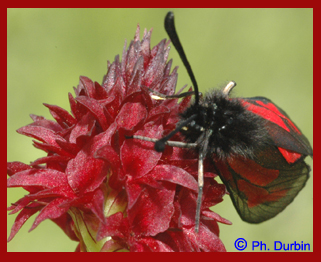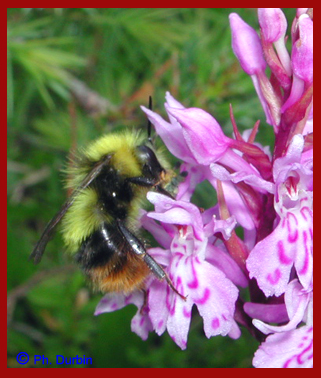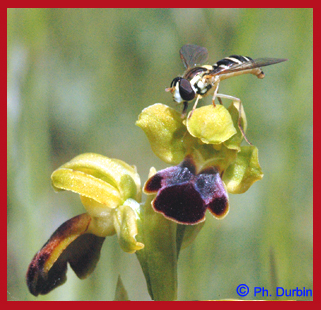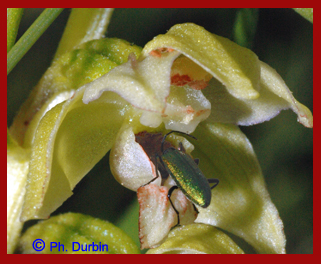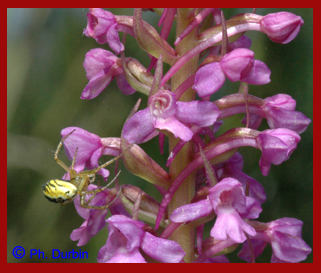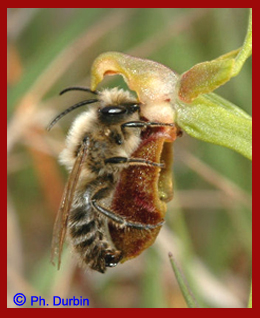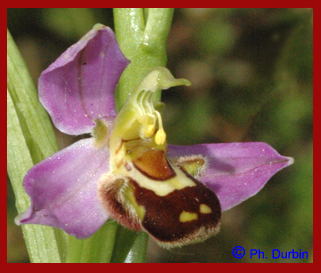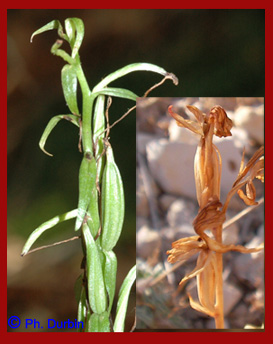
After pollination, flowers wither, ovaries swell becoming a dry capsule from where thousands of seeds escape by longitudinal slits.
Clones
As many of other plants, some wild French orchid species can reproduce through a vegetative way creating genetically identical individuals either from their tubers (some Orchis and Serapias ), from their rhizomes (Cypripedium, Cephalantera, Epipactis and Epipogium), from stolons (Goodyera repens) or, in the unique event of Hammarbya paludosa, from bulbils located on the leaves .
Orchids and fungi
However, the most common way to reproduce is the sexual reproduction. Pollination happens when grains of pollen, released from pollinias, get in contact with the stigmatic area in the female part of the flower. Genetic material is then transferred, inducing ovule maturation, that can be detected by the swelling of the ovary that will become a capsule. Flowers wither, then thousands of seeds having reached maturity, escape from the slit capsule.
Orchids seeds are very tiny and devoid of nutritive substances. To germinate, seeds must find microscopic fungi that penetrate into the root to form a mycorrhizal association. Such a symbiotic relationship, providing the host with the necessary nutrients, is required by all orchids at the germination phase.
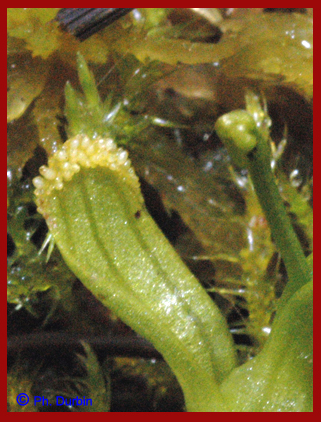
Hammarbya paludosa can reproduce from bulbils located at the leave edge.
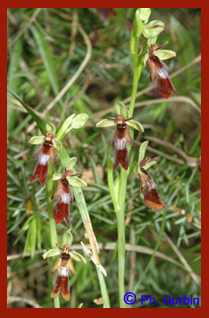
Visual mimicry of Ophrys insectifera is obvious!
